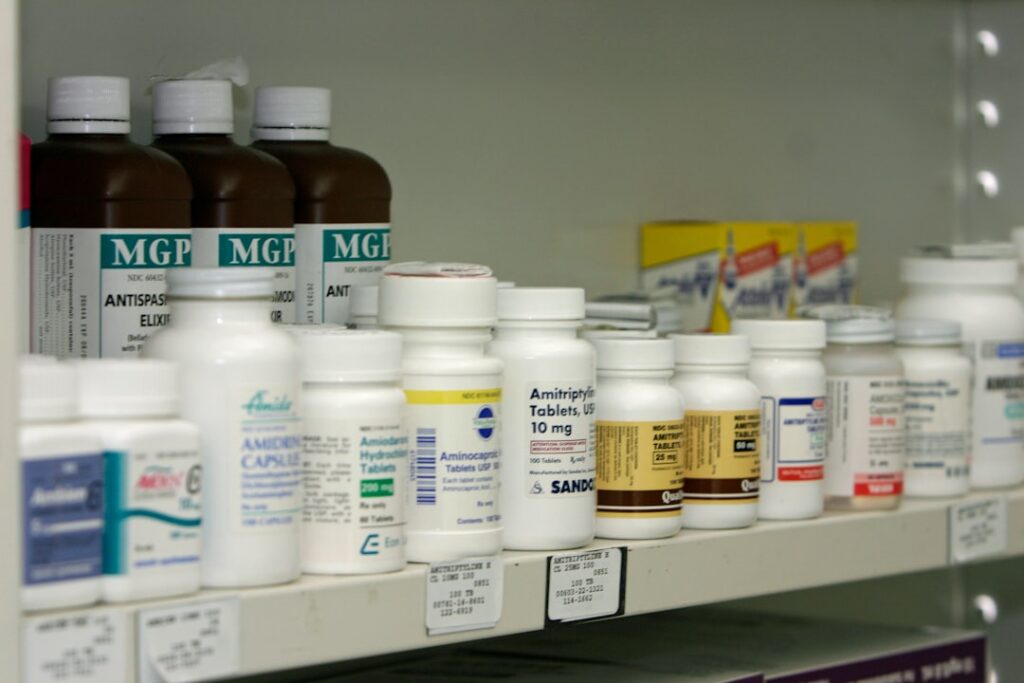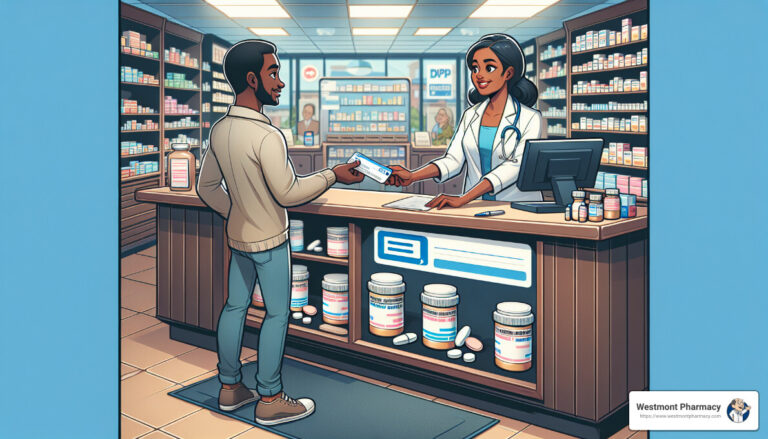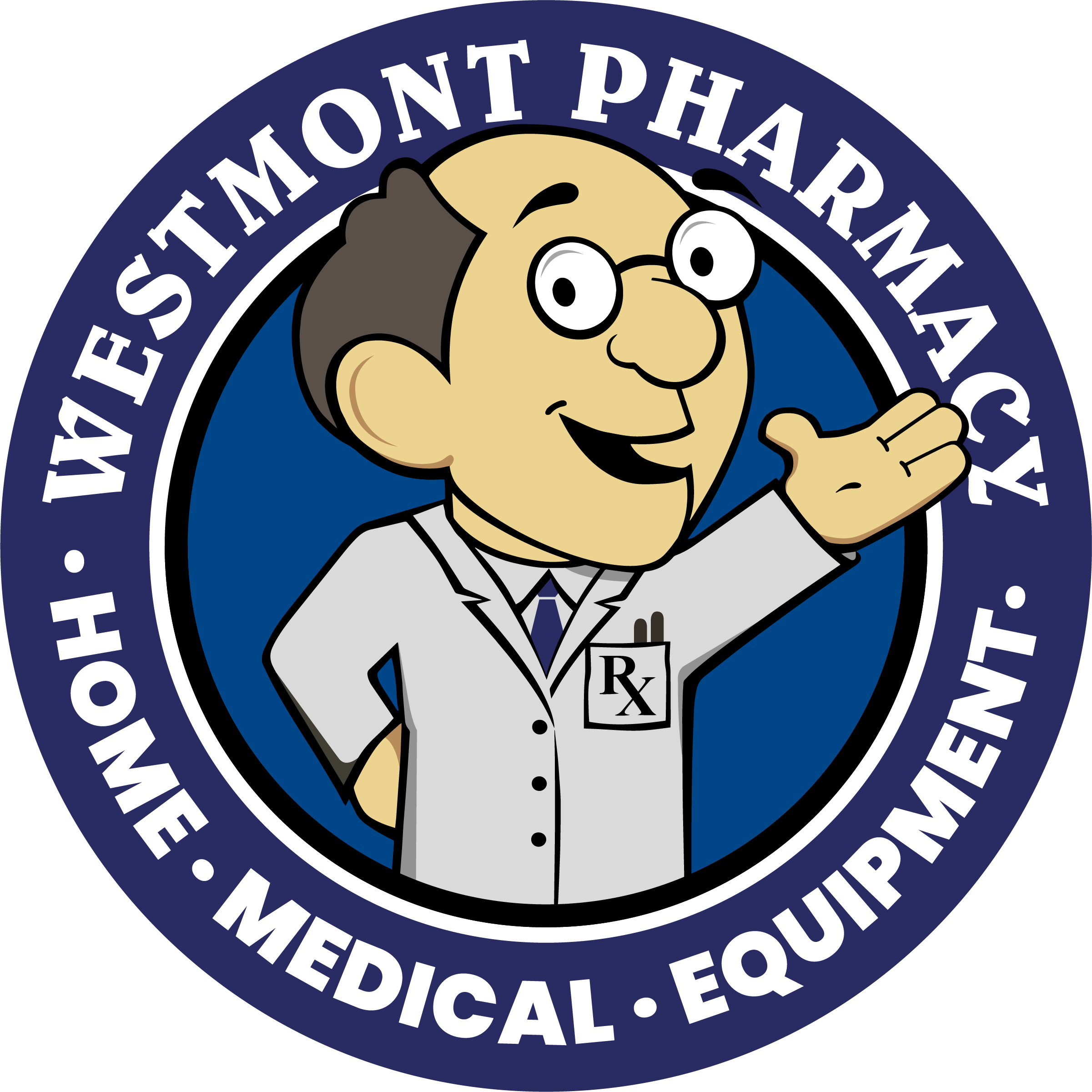The Prescriber’s Guide to Compounded Prescriptions

The Prescriber’s Guide to Compounded Prescriptions
How prescribers can write compounded prescriptions is essential for creating patient-custom treatments. Here’s a quick guide to help:
1. Start with the words “Compounded Medication.”
2. Include the generic name of the active ingredients.
3. Specify the strength or dose (in mg or percent).
4. Define the quantity.
5. Write clear directions for use.
Compounded medications are a cornerstone of personalized healthcare. They allow prescribers to modify medications to suit the unique needs of patients, whether it’s adjusting dosage forms or creating unique combinations. At Westmont Pharmacy, our goal is to partner with you to deliver these specialized solutions.
I am Sazan Sylejmani, an experienced pharmacy manager with a Doctorate in Pharmacy, and I’m here to help you understand the process of writing compounded prescriptions. Let’s move forward to learn everything you need to know.
Understanding Compounded Medications
What is Compounding?
Compounding is the art and science of preparing personalized medications for patients. It involves a licensed pharmacist creating a pharmaceutical preparation custom to meet the unique needs of an individual, whether human or animal. The U.S. Pharmacopeia Convention (USP) defines compounding as “the preparation, mixing, assembling, altering, packaging, and labeling of a drug, drug-delivery device, or device in accordance with a licensed practitioner’s prescription.”
In simpler terms, compounding allows pharmacists to customize medications that are not commercially available. This could mean altering the strength of a medication, changing its form, or even adding flavors to make it more palatable.

Why is Compounding Necessary?
1. Drug Intolerance
Sometimes, patients cannot tolerate certain ingredients found in commercially available medications. For instance, a patient might be allergic to lactose, gluten, or dyes. Compounding allows pharmacists to exclude these unwanted, nonessential ingredients, ensuring the patient can safely take their medication.
2. Unavailable Preparations
There are situations where the exact preparation a patient needs is not commercially available. For example, if an elderly patient has difficulty swallowing large pills, a compounding pharmacist can create a liquid form of the medication. This customization ensures that patients receive the appropriate dosage in a form they can easily take.
3. Drug Shortages
Drug shortages or discontinuations can pose significant challenges. Compounding pharmacies can step in to create these critical medications, ensuring that patients continue to receive the treatments they need. This was notably seen when alternative solutions were provided to address drug shortages, ensuring patients had access to necessary medications.
4. Unique Patient Needs
Patients have unique needs that often cannot be met with standard medications. For example, a child who refuses to take a bitter-tasting medicine might benefit from a flavored liquid form, making the treatment more acceptable and effective.
Customized Medications for Specific Needs
Compounded medications offer a range of customized solutions:
- Strength or Dosage Adjustments: Tailoring the dosage to the specific needs of the patient.
- Flavoring: Adding flavors to make medications more palatable, especially for children and pets.
- Form Alteration: Changing the form of the medication (e.g., from a pill to a cream or gel) for easier administration.
- Specialized Combinations: Combining multiple medications into a single dosage form to simplify the treatment regimen.
Compounding is a critical service that addresses gaps in the pharmaceutical market, ensuring that all patients receive the best possible care.
Pharmaceutical Preparation by Licensed Pharmacists
All licensed pharmacists are trained in the basics of compounding. However, specialized compounding pharmacies invest in advanced equipment and training to handle more complex preparations. These pharmacies can create both nonsterile (ointments, creams, liquids, capsules) and sterile (injectables, eye preparations) compounded medications.
Pharmacists at Westmont Pharmacy work closely with prescribers to create these customized medications, ensuring the highest standards of safety and efficacy.
Next, we will dig into how prescribers can write compounded prescriptions to ensure their patients get the personalized medications they need.
How Prescribers Can Write Compounded Prescriptions
Essential Information for a Compounded Prescription
When writing a prescription for a compounded medication, it’s crucial to include all necessary details to ensure the pharmacist can accurately prepare the medication. Here’s what you need to provide:
- Patient Identification: Clearly state the patient’s name and any relevant identification details. This ensures the medication is custom specifically for the individual.
- Drug Allergies: List any known allergies to avoid adverse reactions. For example, if a patient is allergic to lactose, the pharmacist can prepare a lactose-free formulation.
- Active Ingredients: Specify the generic names of the active ingredients. This helps the pharmacist understand exactly what components are needed.
- Strength/Dose: Indicate the strength or dose of each active ingredient, either in milligrams (mg) or as a percentage. This ensures the medication is potent enough to be effective but safe for the patient.
- Quantity: State the total quantity of the medication required. This could be the number of capsules, milliliters of liquid, or grams of cream.
- Directions for Use: Provide clear instructions on how the patient should use the medication. For example, “Take one capsule twice daily with food.”
Steps to Writing a Compounded Prescription
Writing a compounded prescription involves several critical steps to ensure accuracy and patient safety. Here’s a straightforward guide:
- Measure
-
Start by determining the exact amount of each active ingredient needed. Precision is key to ensure the medication is both safe and effective.
-
Mix
-
Combine the ingredients as specified. Compounding pharmacists use specialized equipment to mix the ingredients thoroughly, ensuring uniformity.
-
Mold
-
Depending on the form of the medication (capsule, cream, liquid, etc.), the pharmacist will mold or shape the mixture accordingly. For instance, they might fill capsules, pour liquids into bottles, or mold creams into containers.
-
Package
- Finally, the medication is packaged securely. Proper labeling is essential, including the patient’s name, dosage instructions, and any special storage requirements.
By following these steps, prescribers can ensure their patients receive the exact compounded medication they need, custom to their specific requirements.
Next, we will explore common reasons for compounding prescriptions and provide examples of compounded medications to illustrate the versatility and necessity of this practice.
Common Reasons for Compounding Prescriptions
Compounding prescriptions offer unique solutions for patients with specific needs that commercially available drugs can’t meet. Here are some common reasons why prescribers might choose compounded medications:
Drug Allergies
Some patients are allergic to ingredients found in standard medications, such as lactose, gluten, or dyes. Compounding pharmacists can create formulations that exclude these allergens, making the medication safe for the patient. For example, a patient allergic to lactose might receive a lactose-free version of their medication.
Dosage Customization
Standard dosages might not be suitable for every patient. For instance, elderly patients and children often require lower doses than what is commercially available. A compounding pharmacist can adjust the strength of the medication to match the exact needs of the patient, ensuring efficacy and safety.
Flavoring
Medications can be made more palatable, especially for children or pets, by adding flavors. For example, a liquid antibiotic for a child can be flavored with cherry or bubblegum to ensure they take it without resistance.
Form Alteration
Some patients have difficulty swallowing pills or experience stomach upset with oral medications. Compounding allows these medications to be transformed into more suitable forms, such as:
- Creams: Topical applications for skin conditions.
- Liquids: Easier to swallow and often flavored for better taste.
- Capsules: Customized doses.
- Troches: Small lozenges that dissolve in the mouth.
- Ointments: Similar to creams but usually thicker and more occlusive.
- Drops: Often used for eye or ear conditions.
- Suppositories: For patients who need medication administered rectally or vaginally.
- Gels: Such as transdermal gels that deliver medication through the skin.
Examples of Compounded Medications
Pediatric Compounding
A child with a bacterial infection might struggle with the taste of a commercially available antibiotic. A compounding pharmacist can create a liquid version of the drug, flavored with something the child likes, making it much easier for the parent to administer.
Veterinary Compounding
Pets often refuse to take medication in pill form. A veterinarian might prescribe a compounded medication in a flavored liquid or gel form. For example, a cat that needs regular medication might receive it as a tuna-flavored liquid.
Hormone Replacement Therapy
An individual undergoing hormone replacement therapy might need a specific combination of hormones that isn’t available commercially. A compounding pharmacist can create a custom cream or gel with the exact hormone levels required.
Pain Management
Patients with chronic pain might benefit from a compounded topical gel that delivers pain relief directly to the affected area, minimizing systemic side effects.
Compounded medications offer a custom approach to healthcare, ensuring that each patient receives the exact treatment they need. This customization can significantly improve the effectiveness and tolerability of medications, leading to better health outcomes.
Next, we will explore the regulatory and safety considerations involved in compounding prescriptions to ensure they meet the highest standards of quality and safety.
Regulatory and Safety Considerations
When it comes to compounded medications, ensuring safety and compliance is crucial. Here, we’ll look at the differences between compounding and manufacturing and how safety and compliance are maintained through various guidelines and regulations.
Differences Between Compounding and Manufacturing
Traditional Compounding vs. Mass Production
Traditional compounding involves creating customized medications custom to an individual patient’s needs. This process is performed by licensed pharmacists who mix ingredients in specific strengths and dosages as prescribed by a healthcare provider.
Mass production, on the other hand, involves large-scale manufacturing of medications by pharmaceutical companies. These drugs are produced in standard dosages and forms, intended for a broad patient population.
FDA Approval
One key difference is that mass-produced drugs must go through the FDA approval process, which includes rigorous testing for safety, efficacy, and quality. Compounded medications, however, are exempt from this process under Section 503A of the Federal Food, Drug, and Cosmetic Act if they meet specific criteria. This exemption allows compounding pharmacists to provide personalized medications without the lengthy approval process but still under strict regulatory oversight.
Ensuring Safety and Compliance
Compounded medications must adhere to high standards of safety and quality, overseen by multiple regulatory bodies.
State Boards of Pharmacy
Each state has its own board of pharmacy that regulates the practice of pharmacy, including compounding. These boards ensure that compounding pharmacies comply with state laws and standards.
FDA Oversight
While the FDA does not approve compounded medications, it has oversight for the integrity and safety of the active pharmaceutical ingredients (APIs) used. The FDA works with state boards to ensure compliance with federal regulations and can take action against pharmacies that violate these standards.
DEA Oversight
The Drug Enforcement Administration (DEA) oversees the use of controlled substances in compounding. This includes drugs like hydrocodone and amphetamines, which require strict handling and documentation to prevent misuse.
The United States Pharmacopeial (USP) Convention sets national standards for compounding practices. These standards cover various aspects of compounding to ensure safety and quality:
-
USP <797>: This chapter provides guidelines for compounding sterile preparations, focusing on preventing microbial contamination and ensuring the safety of compounded sterile products.
-
USP <795>: This chapter outlines standards for compounding nonsterile preparations, including categorizing compounding activities and defining stability and beyond-use dates.
-
USP <800>: This chapter addresses the handling of hazardous drugs to protect healthcare workers, patients, and the environment. It includes guidelines for safe handling, storage, and disposal of hazardous drugs.
Compliance with these USP guidelines is considered the minimum standard of practice in pharmacy.
By adhering to these regulations and standards, compounding pharmacies ensure that their practices are safe, effective, and compliant with both federal and state laws.
Next, we will explore the frequently asked questions about compounded prescriptions to provide further clarity on this topic.
Frequently Asked Questions about Compounded Prescriptions
How to Write a Prescription for a Compounded Medication?
Writing a prescription for a compounded medication is straightforward but requires specific details to ensure the patient’s needs are met. Here’s how prescribers can write compounded prescriptions step-by-step:
- Begin with “Compounded Medication”: This indicates that the prescription is for a customized medication.
- Patient Information: Include the patient’s full name, date of birth, and any known drug allergies.
- Active Ingredients: Specify the generic names of the active ingredients required for the compounded medication.
- Strength or Dose: Clearly state the strength or dose of each active ingredient in milligrams (mg) or percentage (%).
- Quantity: Indicate the total amount of the medication to be dispensed.
- Directions for Use: Provide detailed instructions on how the patient should use the medication. This includes the route of administration (e.g., oral, topical), dosage, and frequency.
Example Prescription:
Compounded Medication
Patient: Jane Smith, DOB: 02/02/1960, Allergies: None
Active Ingredients: Amoxicillin 50 mg/mL
Strength: 50 mg/mL
Quantity: 150 mL
Directions: Take 5 mL orally twice daily for 10 days
What Could Be a Reason for the Prescriber to Request a Medication to Be Compounded?
There are several scenarios where a prescriber might request a compounded medication:
- Drug Intolerance: The patient may have allergies or intolerances to certain ingredients in commercially available drugs, such as lactose, gluten, or dyes.
- Unavailable Preparations: The required medication or specific dosage form might not be commercially available. For example, a medication may only be available as a pill, but the patient needs it in liquid form.
- Drug Shortages: Sometimes, commercially manufactured drugs are in short supply or discontinued, necessitating a compounded alternative.
- Pediatric Needs: Children often require smaller doses or liquid forms of medications that are not available commercially.
- Veterinary Medicine: Pets may need medications in forms or flavors that are not available commercially.
How Are Compounded Medications Made?
Compounded medications are created through a meticulous process that involves several steps:
- Measuring: The pharmacist measures the precise amounts of each active ingredient and excipient required for the prescription.
- Mixing: The ingredients are mixed thoroughly to ensure a uniform preparation. This step may involve grinding, blending, or stirring, depending on the medication form.
- Molding: For solid dosage forms like capsules or suppositories, the mixture is placed into molds to achieve the desired shape and size.
- Packaging: The final product is packaged in appropriate containers to maintain stability and protect it from contamination. Labels with instructions and expiration dates are added.
Each step is performed under strict guidelines to ensure the medication is safe and effective for the patient. The process is overseen by licensed pharmacists who ensure compliance with USP standards and other regulatory requirements.
Next, we will dig into common reasons for compounding prescriptions and provide examples of how compounded medications can be custom to meet specific patient needs.
Conclusion
At Westmont Pharmacy, we take pride in offering personalized care through our comprehensive prescription compounding services. Our goal is to meet the unique needs of each patient, ensuring they receive the most suitable medication in the form they can easily use.
Westmont Pharmacy has been a trusted healthcare provider since 1930, serving the community with dedication and expertise. Our team of licensed pharmacists works closely with prescribers to create customized medication solutions tailored to individual patient requirements.
Whether it’s creating a flavored liquid medication for a child, developing a transdermal gel for pain relief, or compounding a specialized formulation for a pet, we are here to help. Our commitment to quality and safety ensures that every compounded medication meets the highest standards of care.
For more information on how we can assist with your compounding needs, visit our Pharmacy Services page. We’re here to support you on your healthcare journey with personalized, reliable solutions.
Next, we will dig into common reasons for compounding prescriptions and provide examples of how compounded medications can be tailored to meet specific patient needs.

